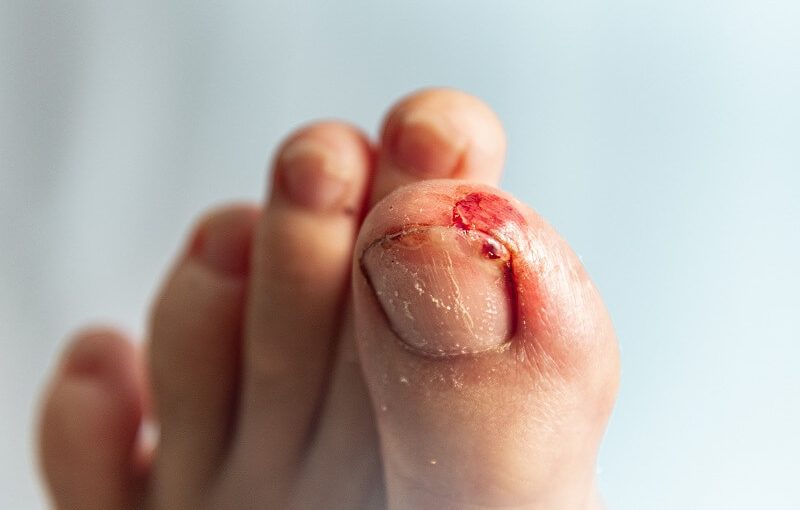Everyone has managed to stub their toe and endure the excruciating pain that comes with it. A stubbed toe seems like such a minor injury, but the pain that comes with it can stop you in your tracks for a few minutes. After the initial pain, the residual pain can also last a few minutes. But why is stubbing your toe so painful? Below you will find the anatomical analysis that explains why stubbing your toe can be one of the more painful injuries you experience.
The Role of Nerve Receptors
Again, while it may seem like a lesser injury as compared to a break or even childbirth, there is a lot of force that comes with the movement and momentum that’s behind a stubbed toe. With such momentum on such a tiny part of your body, it’s bound to hurt. Medical experts say that you can put two to three times your body weight on your toe if you are walking fast or jogging when you stub it.
The small toes on your feet have a bunch of nerve receptors that are to thank for what you feel. They receptors are struck by the impact which is why you likely yell and drop to your knees holding your impacted toe. Each of your toes has a nerve on each side. Because of this, no matter where the impact hits when you stub your toe you are going to feel it. That nerve impulse is going to go from your toe to your brain in a heartbeat. The nerves react quickly by sending a message to your brain that alerts it that something external may cause harm to the body. When that nerve gets activated it sends a message to your brain and you will perceive pain.
Why Does a Stubbed Toe Hurt for So Long?
There is always the initial stubbed toe pain where you fall to your knees or hop around holding your toe. Then, the lingering pain lasts for few minutes. It’s been proven that there are legitimately two waves of pain when it comes to a stubbed toe. The immediate pain and then the lingering pain. The reason for this is also related to your nerve receptors. The same receptors that send the message to your brain are at play here. However, it’s important to understand that the path the nerve receptors take is really important in understanding the two types of pain that come with a stubbed toe. The first message is sent through thick, insulated fibers in your body that help the receptor transmit the message quickly. This is the immediate, sharp pain that you feel. The second message is sent through thin, uninsulated fibers that are much slower than the first set of fibers the message is sent through. This is the dull, achy pain that you feel after the sharp pain.
While the pain of a stubbed toe is annoying to deal with, there is a silver lining! The pain you feel when you stub your toe is a reminder that your nervous system is working and in full effect. Your nervous system is responsible for protecting you from harm from external forces. While you may not want this reminder, it’s an integral part of your health and well-being.
Toes are Vulnerable
Your toes help out a lot when it comes to balance and movement. However, they are small and vulnerable if not protected. When you stub your toe it’s not only the nerve endings that are at play. The nerve endings are helpful to alert you that your nervous system is working and that an external force has harmed your body. But, you may have also damaged the nail, skin, or bone in your foot depending on how hard the hit was. While a regular old stubbed toe will be old news within the next few minutes, it’s possible you can have more than just a stubbed toe. Some people have actually broken their toes, broke or tore a nail, or even punctured their skin. While a stubbed toe may be just that, if you have pain for more than an hour, see any open wound, or have a major toenail break, you may want to see a doctor. It’s better to be safe than sorry, so a quick check in at the doctor is advised.
Dr. Jamshidinia in Los Angeles
Dr. Jamshidinia at Jamfeet is a board-certified foot surgeon trained in all areas of foot and ankle surgery and treatment. Dr. Jamshidinia and his team believe in comprehensive patient care and are focused on getting you back to full health. Contact Jamfeet for any of your foot or ankle needs!

